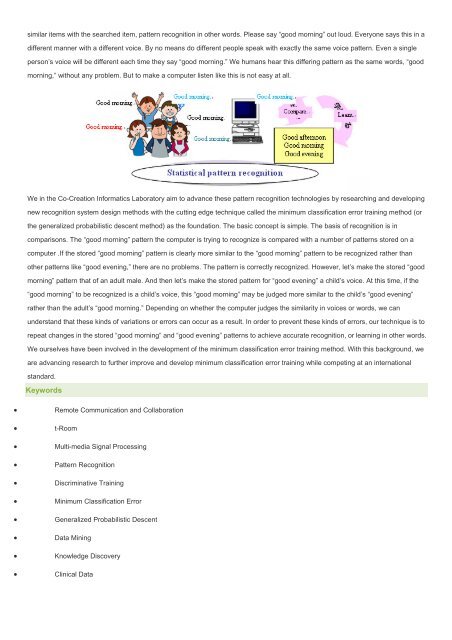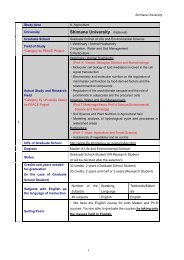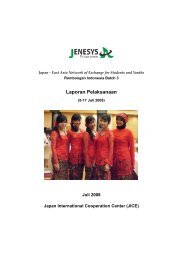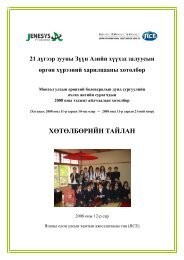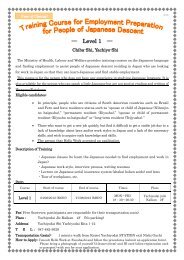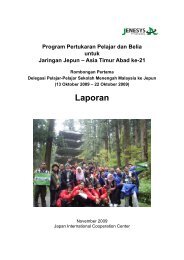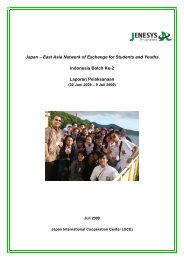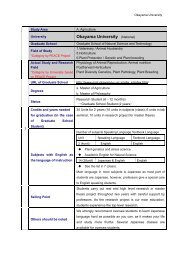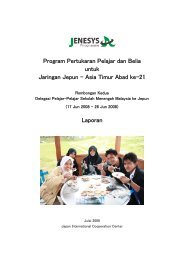Doshisha University (Private)
Doshisha University (Private)
Doshisha University (Private)
Create successful ePaper yourself
Turn your PDF publications into a flip-book with our unique Google optimized e-Paper software.
similar items with the searched item, pattern recognition in other words. Please say “good morning” out loud. Everyone says this in a<br />
different manner with a different voice. By no means do different people speak with exactly the same voice pattern. Even a single<br />
person’s voice will be different each time they say “good morning.” We humans hear this differing pattern as the same words, “good<br />
morning,” without any problem. But to make a computer listen like this is not easy at all.<br />
We in the Co-Creation Informatics Laboratory aim to advance these pattern recognition technologies by researching and developing<br />
new recognition system design methods with the cutting edge technique called the minimum classification error training method (or<br />
the generalized probabilistic descent method) as the foundation. The basic concept is simple. The basis of recognition is in<br />
comparisons. The “good morning” pattern the computer is trying to recognize is compared with a number of patterns stored on a<br />
computer .If the stored “good morning” pattern is clearly more similar to the “good morning” pattern to be recognized rather than<br />
other patterns like “good evening,” there are no problems. The pattern is correctly recognized. However, let’s make the stored “good<br />
morning” pattern that of an adult male. And then let’s make the stored pattern for “good evening” a child’s voice. At this time, if the<br />
“good morning” to be recognized is a child’s voice, this “good morning” may be judged more similar to the child’s “good evening”<br />
rather than the adult’s “good morning.” Depending on whether the computer judges the similarity in voices or words, we can<br />
understand that these kinds of variations or errors can occur as a result. In order to prevent these kinds of errors, our technique is to<br />
repeat changes in the stored “good morning” and “good evening” patterns to achieve accurate recognition, or learning in other words.<br />
We ourselves have been involved in the development of the minimum classification error training method. With this background, we<br />
are advancing research to further improve and develop minimum classification error training while competing at an international<br />
standard.<br />
Keywords<br />
<br />
<br />
<br />
<br />
<br />
<br />
<br />
<br />
<br />
<br />
Remote Communication and Collaboration<br />
t-Room<br />
Multi-media Signal Processing<br />
Pattern Recognition<br />
Discriminative Training<br />
Minimum Classification Error<br />
Generalized Probabilistic Descent<br />
Data Mining<br />
Knowledge Discovery<br />
Clinical Data


